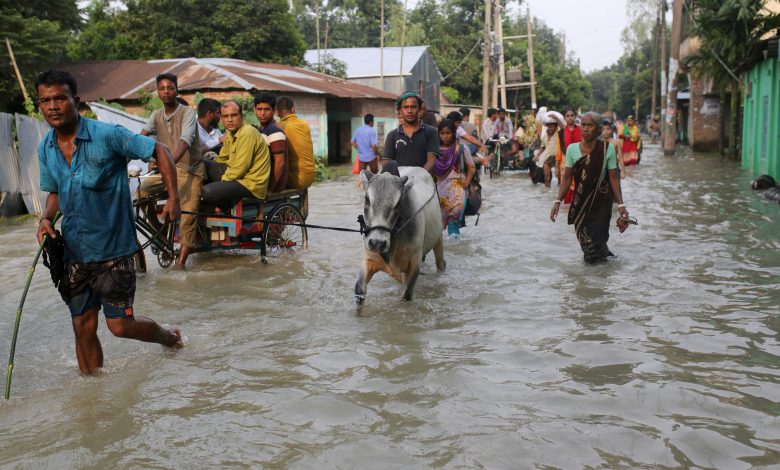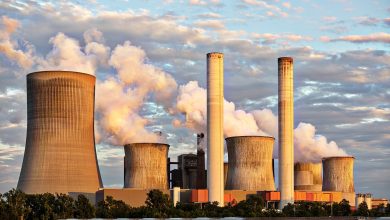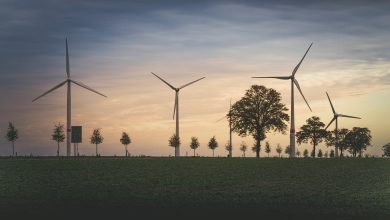Bangladesh Plans to Defy the Paris Agreement With the Expansion of Coal-Fired Power Plants

The Rising Coal Demand
In the coming decades, the Southeast Asian country of Bangladesh plans to massively increase its coal-fired power generation. Bangladesh currently boasts one of the fastest growing economies in the world, with a projected growth rate of nearly eight percent per year over the next two years alone (TIB, 2019). Additionally, between 2000 and 2014, total energy use has nearly doubled (Hutfilter et al, 2019). In order to effectively accommodate its rapidly growing economy and the demand for more electricity, the Government of Bangladesh has been diligently committed to a plan that aims to provide access to affordable and reliable electricity for all the country’s residents. However, the intention to increase reliance on imported coal for power generation has drawn a lengthy list of criticisms from world leaders and environmentalists.
The proportion of fossil fuels used in electricity production within Bangladesh is among the highest in the world. Between 2000 and 2015, the share of fossil fuels used in electricity generation increased from 95% to nearly 99% (Hutfilter et al, 2019) The country’s existing power plants are almost exclusively reliant on oil and natural gas. Bangladesh now has at least 29 coal-fired power projects with a total energy capacity of 33,200 megawatts under construction and pre-construction (TIB, 2019). After all 29 of these proposed power plants are built, Bangladesh’s coal power capacity will increase by 63 times over present day coal power generation. Furthermore, within the last three years, Bangladesh has risen to 6th place (from 12th) among the global ranking of coal power capacity under active development, pre-construction, and construction stages (TIB, 2019).

Defying the Paris Agreement
Bangladesh’s massive investment in coal-fired power plants is inconsistent with the overarching climate goals outlined within the Paris Agreement, which set a goal of limiting global warming to 1.5ºC. Average annual carbon emissions from Bangladesh’s proposed coal plants would equate to roughly 115 million tons of carbon dioxide by 2031, which is notably higher than the upper emissions estimate for the controversial Keystone XL oil pipeline (TIB, 2019). The current plans for domestic coal production would increase the share of coal-generated electricity in Bangladesh to 35% of all sources of power by 2041 (Hutfilter et al, 2019). Policymakers within Bangladesh hope that by shifting the electricity mix toward coal and away from a system that is currently dominated by natural gas and oil, it will help to alleviate some of the significant development-related challenges that are currently experienced within one of the most densely populated countries in the world.
The Downfall of Coal
Despite the fact that some of Bangladesh’s political leaders feel that moving toward a future powered by coal would help to fuel economic growth and reliable electricity generation, coal power plants have struggled economically in recent years. Earlier this year, Murray Energy, America’s largest private coal company, announced that it would be filing for bankruptcy. Additionally, one of America’s largest coal-fired power plants, the Navajo Generating Station, recently shut down its power generation operations for good. The changing economics of the energy industry has had an adverse impact on global coal companies. The shift to cleaner and cheaper sources of power like renewable energy and natural gas is starting to make coal obsolete in developed countries. Since 2010, over 540 coal-fired plants have closed in the U.S. (Stevens, 2019). Global energy experts expect that the decision to rely on coal imports to fuel new electricity generation will adversely impact energy security and could place Bangladesh under even more economic pressure (Nicholas, 2019).
The increasingly volatile coal price fluctuations coupled with the decreasing cost of renewable energy alternatives and natural gas have contributed to the downfall of the global coal industry. Energy experts point to a Pakistan case study when making predictions about how the advancement of coal-fired power plants may impact the Bangladesh economy. As a more developed country than Bangladesh, Pakistan recently brought online a series of new coal-fired power plants. However, the first two power plants that were opened have already come under intense economic pressure due to the rising price of imported coal and the debt that was taken on from project financiers and Chinese developers (Nicholas, 2019). Since Bangladesh will also rely on developers and financial backers from China, Japan, and several other Asian countries, a similar economic outcome is expected.

Climate Change Impacts
In addition to the economic risks associated with shifting the Bangladesh power industry over almost exclusively to coal, Bangladesh is extremely vulnerable to catastrophic flooding related to sea level rise, storm surge, and climate change in general. In fact, Bangladesh is one of the most vulnerable countries in the world when it comes to climate change (Hutfilter et al, 2019). Massive increases in coal-fired power generation, which is the most greenhouse gas intensive form of electricity generation from fossil fuels, will ultimately exacerbate the impacts from climate change on Bangladesh. Through the operating lifetime of Bangladesh’s proposed coal plants, 4,600 million tons of carbon dioxide will be emitted, which is more than 20% greater than the lifetime carbon emissions from all of the currently operating coal-fired power plants in Japan (TIB, 2019).
Under the Paris Climate Accord, 200 countries agreed on a legally binding agreement to cut greenhouse gas emissions and keep increases in the global temperature to “well below” 2 degrees Celsius (Karim, 2019). As Bangladesh has been moving forward with plans to increase its share of electricity generated by coal from 3% of the country’s power to 35%, the United Nations and global leaders involved in the development of the Paris Climate Accord have threatened sanctions against Bangladesh for its disregard of the legally binding agreement. According to Julien Vincent, the executive director of the Australian-based environment group Market Forces, “There is simply no way to square coal expansion with commitments to limit global warming to 1.5°C” (Karim, 2019). In a low-lying country like Bangladesh, where flooding is already a frequent occurrence, the failure to limit global warming could result in even more catastrophic impacts from the annual four-month monsoon season and from gradual sea level rise.

Flooding and Erosion
The 2018 Global Climate Risk Index ranked Bangladesh sixth in the world for vulnerability to the impacts of climate change. Moreover, the country’s low-lying coastal areas are already severely impacted by water-related incidents, with riverbank erosion displacing between 50,000 to 200,000 people each year (Szczepanski et al, 2018). Bangladesh also already endures the most impacts in the world from tropical cyclones, which have resulted in approximately 150,000 deaths over the past 30 years (Hutfilter et al, 2019). Storm surge from strong cyclones often push massive walls of water up to 50 to 60 miles up the Brahmaputra, Ganges, and Meghna rivers, which make up the world’s largest river delta within the Bay of Bengal. On the other hand, the melting glaciers and snowpack in the Himalayas have also been sending an increasing amount of water into Bangladesh from Nepal, Tibet, Bhutan, and India.
In 2009, the Government of Bangladesh published a Climate Change Strategy and Action Plan that revealed how an average year results in nearly one quarter of the country being inundated by flooding. However, the report also said that every four to five years, severe flooding devastates over 60% of the country. Rising waters within the Bay of Bengal have also destroyed countless islands off the coast of Bangladesh. Over the past two decades, Sandwip Island, near Chittagong, has lost approximately 90 percent of its original 23-square-miles of landmass (Glennon, 2017). With regards to financial impacts from flooding, extreme storms and rising waters have resulted in a loss of more than $8.5 billion over the past 30 years (Hutfilter et al, 2019). A conservative estimate of a three-foot rise in the sea level would cause nearly 20 percent of the country to be submerged underwater, while it would also displace over 30 million Bangladeshi residents (Glennon, 2017).

Land Constraints and Migration
In a country with nearly 164 million residents packed into a landmass no bigger than the size of New York State, Bangladesh already struggles with a rapidly growing population and lack of land. The scarcity of land is part of the reason why Bangladesh policymakers felt forced to resort to coal for future power generation. Ahmed Kaikaus, a senior civil servant within Bangladesh’s Ministry of Power, Energy and Mineral Resources, reported that the country had no choice other than coal to meet the growing energy demand. In an interview with the Thomson Reuters Foundation, Kaikaus said that the shortage of land would not provide the space needed to adopt widescale solar or wind power (Karim, 2019). Instead, coal-fired power plants would be able to provide the power needed within the constrained landscape. Even with the land constraint, Kaikaus stressed that Bangladesh would still be committed to its target to meet ten percent of its electricity needs from renewable sources of energy by 2021 (Karim, 2019).
Bangladesh’s increasing population paired with its land shortage have created unique challenges for its major population centers. The International Organization for Migration says that climate change caused by fossil fuel consumption has resulted in a mass exodus of rural Bangladeshi residents. Rural residents have been fleeing the country’s coastal regions for Dhaka, the country’s capital city of over 18 million. As climate refugees have started flooding the city, the population is expected to continue to soar, with many of the new residents forming decrepit slums and informal communities. The saltwater incursion within the coastal regions has contaminated groundwater, increased soil salinity, killed vital cropland, and has forced residents to flee in search of new livelihoods. With little freshwater to drink or irrigate crops, there is little hope for the future of the country’s already impoverished coastal farmers.

Pollution
In addition to exacerbating climate change and the migration crisis, the expansion of the coal industry in Bangladesh is also expected to worsen air pollution and public health. Outdoor air pollution is already a significant health concern for Bangladesh, particularly in its urbanized areas. The World Health Organization estimates that in 2016 alone, about 82,000 Bangladeshi residents died as a result of outdoor air pollution (Hutfilter et al, 2019). According to the 2018 World Air Quality Report, Bangladesh was revealed to already have the world’s worst air pollution problem (Nicholas, 2019). Moreover, given that Bangladesh’s only operational coal plant is known to be toxic and inefficient, concerns have been raised about how new coal plants may increase toxins within the landscape. Bangladesh’s 525 megawatt Barapukuria subcritical coal power plant has been found to have significantly contaminated groundwater and irrigation systems with toxic heavy metals like lead and chromium, with levels 8,025-18,675 times higher than what the World Health Organization considers to be acceptable (TIB, 2019).
As a country that has made significant strides in recent years to reduce poverty, Bangladesh has struggled to meet the rising demand for energy. However, as plans have been released to vastly expand the coal industry, experts say that Bangladesh will bust global climate targets, increase air and water pollution, and worsen the country’s climate migration crisis. Despite being one of the world’s most vulnerable countries to the impacts of climate change, Bangladesh is poised to continue to exacerbate social, environmental, and economic impacts as a result of its future energy plan. Although, since only 10% of the proposed coal plants have moved to the construction phase, Bangladesh still has the opportunity to support a clean and sustainable energy future with investments in natural gas and renewable alternatives.
Sources
Glennon, R. (2017). “The Unfolding Tragedy of Climate Change in Bangladesh.” Scientific American.
Hutfilter, U., et al. (2019). Country Profile: Bangladesh, Decarbonizing South and South East Asia: United National Environment Program.
Karim, N. (2019). “Bangladesh seen as climate threat by boosting coal reliance.” Reuters.
Nicholas, S. (2019). “IEEFA Update: Bangladesh’s coal expansion plans stir criticism.” Institute for Energy Economics and Financial Analysis.
Stevens, P. (2019). “One of the largest coal-fired power plants in the Western US has just closed for good.” CNBC.
Szczepanski, M., et al. (2018). “Bangladesh: A Country Underwater, a Culture on the Move.” NRDC.
TIB. (2019). “Choked by Coal: The Carbon Catastrophe in Bangladesh.” Transparency International Bangladesh.



